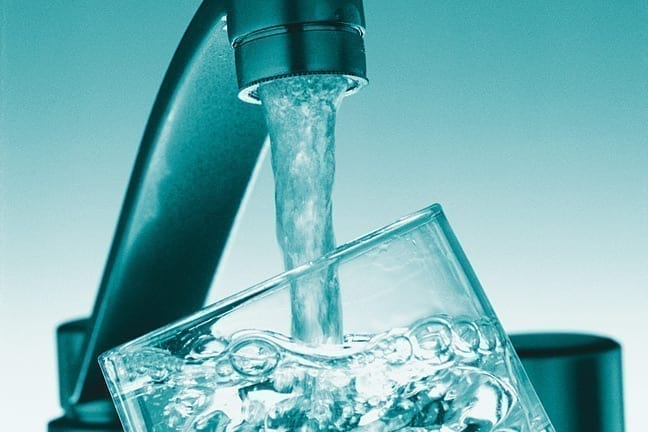Are you a steadfast Brita-user, or do you go tap all the way? If you’re set in your ways, it’s worth taking a closer look at what filtering can do for your water.With clean water being a scarce commodity in many areas of the world, it’s worth pointing out that if you have the privilege of debating between using a filter or just drinking what comes from your faucet, it’s probably not a matter of life and death.With that perspective in mind, how to get the cleanest water possible is a confusing journey.We’ll help you navigate the waters of your local H20 supply, so you don’t get caught in a tide of confusing messages about what’s unsafe to drink, and deliver you the facts so you could avoid stomach upset when you travel, and maintain healthy drinking habits at home.MORE: How Much Water Do You Need to Drink?
Sip Smart
Reusing water bottles could lead to plastic leaching into your water. Try a water bottle with a filter, like the Bobble. It’s free of BPA, Phthalates and PVC.
1. What does your water filter do?“Filtering water is a process that removes particles, or color, or chemicals or pathogens from water suspected to be ‘dirty.’ It may be visualized as a sponge that removes the contaminant of interest, while the water that passes through is safe to consume,” says Konstantinos Makris, Ph.D. Assistant Professor of Environmental Health at the Cyprus University of Technology, which is associated with the Harvard School of Public Health.The popular Brita water filter uses activated carbon and ion exchange resin to attract contaminants like copper, mercury and cadmium, so they stick to the filter while the rest of the water trickles on by. Why do people do it? In excess, contaminants can cause damage.Cadmium and mercury, for instance, come from runoff sources like factories or refineries (even batteries) and high amounts can lead to kidney damage in the long-term. Copper from corroded household plumbing and eroded natural deposits can cause stomach upset in the short-term, and liver or kidney damage over time. The filter not only decreases the presence of these chemicals, but also takes out the odor and taste of chlorine to make for a crisper taste.MORE: Is Your Hard Water Causing Acne?
 |
“A common mistake with consumers buying filters is that they often buy the wrong filters; you need to know before buying the filters what you want to remove from your water source. Filters do not remove all contaminants, but only specific classes of them,” Dr. Makris says.The new Bobble jug is like the Brita pitcher, but additionally filters out lead, which in high amounts could lead to developmental delays in children, and high blood pressure in adults. If you live in a house that is very old or very new, you may have lead solder in your pipes. If you’re house is even older, you may have lead pipes!For the Brita and Bobble filters you must still run “potable water” through them, or drinking water that’s pure enough to consume on its own, with low risk of immediate or long-term harm.MORE: Learn about the various filters available to you.2. But is tap water generally safe to drink at home?Of course that depends on where your home is.“Clean, safe water reaches our homes only after effective implementation of all these firewalls/tests. Of course, drinking water quality varies from city to city, from town to town, even within the same town due perhaps to deteriorating pipe network conditions,” Dr. Makris says.So you don’t have to take on the responsibility of judging how safe your water is. U.S. residents could use the Internet as a resource to see if there are any water violations in the area. Tap water suppliers must provide water quality reports to their customers. So you can call your water provider to receive an annual report if you can’t find your region online. (The phone number should be on your water bill!) Or, the municipal water report for your town (sometimes called a Consumer Confidence Report) will tell you what’s in your water and give a tolerable range for the amount of certain substances you could safely drink. Here are the big ones to look out for:1) Lead – Check the source, it could be coming from corrosive plumbing.2) Nitrates and nitrites – Only small amounts from fertilizer and runoff are tolerable. The range will specify.3) E. coli – This comes from sewage, ideally you don’t want any in your water.4) Arsenic, cyanide and mercury – There shouldn’t be any.If your water doesn’t come from a municipal source (well water is one example) you can take matters into your own hands with a water testing system. It’s relatively inexpensive and you’ll have results within 48 hours.You may require special filtering if you have arsenic or radon in your water supply. Unlike the bottled water industry, which is regulated by the Food and Drug Administration, the Environmental Protection Agency (EPA) regulates tap water. The EPA offers more information about your local water supply.MORE: Coconut Water’s Not a Cure All, After All3. Should you not drink the tap water when traveling?The water standards in the United States and European countries are similar, and should be “safe to consume,” even if you’re traveling across seas from one place to the other. So what’s all the hype about getting sick when you drink the water while traveling?“Gastrointestinal illnesses may occur in countries that do not closely follow directive’s requirements, such as, when U.S. travelers visit developing countries,” Dr. Makris says. “In developing countries, as a rule of thumb, microorganisms should be your major acute health threat, thus you have to choose a filter that traps most frequent microorganisms, delivering to you pathogen-free water, or perhaps drink bottled water,” Dr. Makris says.You may want to save the environment from needless plastic bottles, but when you’re in a developing country consider it a free pass to drink a bottle of water.QUIZ: What Nutrients Are You Getting?




































